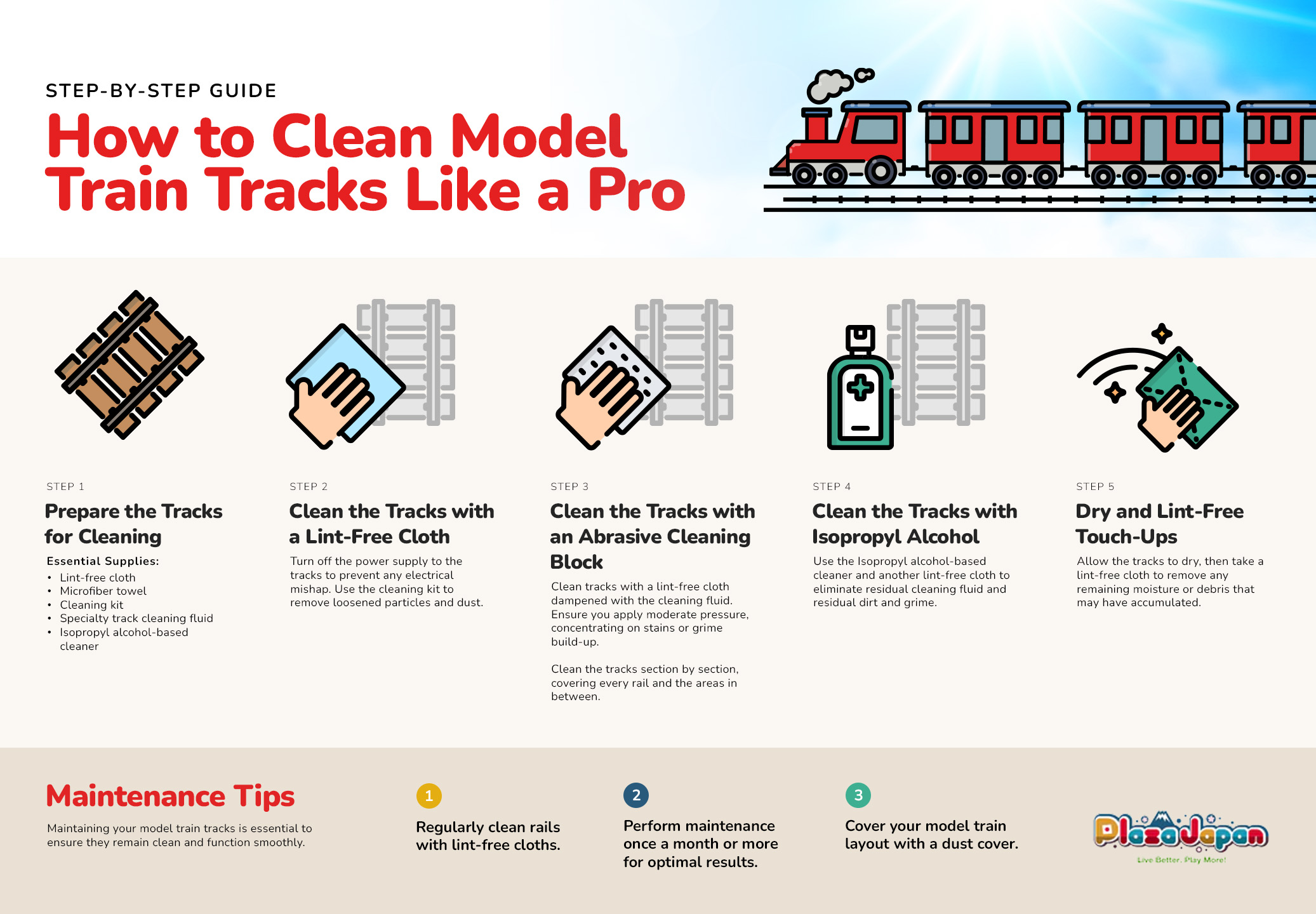How To Clean Model Train Tracks Like a Pro
Jul 8, 2023
As a model train enthusiast, you know that regularly maintaining equipment is a necessity if you want your trains to run smoothly and efficiently. One of the most essential tasks is cleaning your model train tracks, which can become dirty and affect the performance of your trains. In this comprehensive guide, the question of how to clean your model train tracks like a pro will never be an issue again.
The Importance of Cleaning Your Model Train Tracks
Before we dig into the nitty-gritty of how to clean a model railway track, let's pause to recognize its vital importance. Dirty rails can lead to turbulent and unpredictable train movements, such as jerking, stuttering, and even derailments.
These issues ultimately make for a less enjoyable experience while operating your model trains. Furthermore, dirty tracks can reduce electrical conductivity, which makes it difficult to propel trains or send sufficient power to accessories. To avoid such issues, cleaning your model train tracks is essential.
Tools and Products Required
When learning how to clean your model train tracks, the first step is gathering the right tools and supplies. You will need several items, such as a track eraser, a Peco track rubber, a track cleaning car, or an abrasive cleaning block, to remove oxidation and dirt from the tracks.
To polish and clean your tracks, a flat washer, isopropyl alcohol, a cleaning kit, and lint-free clothes are required. In addition, it is also wise to have Q-tips or cotton buds on hand, to clean those hard-to-reach areas. Whether you have the items on hand or not, your local hobby store and online stores offer all the supplies for this project.

Step-by-Step Cleaning Process
Once you have the necessary materials, you can start cleaning your model railway tracks, and here's how to do it. By closely following these simple instructions, you can ensure this railway cleaning turns out perfectly.
Step 1: Prepare the Tracks for Cleaning
First, switch off the power to the tracks. Cutting off the power supply to the railway tracks or flipping a switch on an electric transformer are two simple ways to deactivate your train's energy source. Once the power is off, remove debris, dust, or loose particles from the rails using the track cleaning car or the track eraser. To make sure your tracks sparkle, remember to clean the hard-to-reach places. Put in that extra effort for a comprehensive shine.
Step 2: Clean the Tracks with a Lint-Free Cloth
Next, you will want to use a lint-free cloth or microfiber towel and gently scrub the tracks with your track cleaning solution. Use a gentle circular motion to distribute the cleaner evenly across the rails. A common mistake is using too much pressure or scrubbing the tracks too harshly, which can scratch or damage train tracks. Instead, focus on gently cleaning each rail separately.
Step 3: Clean the Tracks with an Abrasive Cleaning Block
If you encounter tough stains or dirt build-up, using an abrasive cleaning block can help. To ensure a smooth finish, ease into the polishing process by beginning with less aggressive abrasive blocks before progressing to harsher varieties – this will help preserve your tracks. Gently rub the block on the affected area until the dirt build-up dislodges. For the best results, get down between the rails, as mentioned earlier, to get a thorough cleaning.
Step 4: Clean the Tracks with Isopropyl Alcohol
Once you have finished cleaning the tracks with your chosen cleaning solutions, it's essential to wipe the rails with isopropyl alcohol. This step removes any remaining residue of the cleaning fluid, ensuring tracks are clean, and positively impacts future conductivity. Isopropyl alcohol's fast-evaporating properties make it an ideal choice for protecting your model train tracks without any long-term adverse effects.
Step 5: Dry and Lint-Free Touch-Ups
As you near completion of the track cleaning process, take a moment to slow down, and don't let impatience sabotage your hard work – it's almost finished. You must allow the cleaned tracks to dry for a few minutes before you proceed.
Finally, take a final lint-free cloth and wipe the rails once more to remove any excess moisture or loose dirt that may have accumulated. This careful wiping process ensures that no unwanted dirt stays on the track and produces optimal conductivity for the future.
Maintenance Tips
Once you know how to clean model train tracks, establish a maintenance schedule to keep everything running smoothly. Here are some suggestions for model train track maintenance:
- Do not under any circumstances use WD-40 or rubbing alcohol on your rails. Doing so will increase the likelihood of damage to the wheels.
- Clean your train tracks regularly, ideally once a month or as needed, so your train set runs smoother.
- Keep the model train layout covered when not in use to protect and preserve it from any external factors that can cause dust build-up and unwanted contamination.
Conclusion
Learning to clean model train tracks and how to do it is mandatory if you consider yourself a train lover. You've put money, time, and passion into your layout, so regularly cleaning your rails and cars should be a no-brainer. By following the steps outlined in this guide and adopting a regular maintenance routine, you'll have a clean and functioning model train layout for years to come.

 JPY
JPY  Euros
Euros
 British Pounds
British Pounds
 Australia Dollars
Australia Dollars
 US Dollars
US Dollars
 Canada Dollars
Canada Dollars
 Chinese Yuan
Chinese Yuan
 Singapore Dollar
Singapore Dollar
 Hong Kong Dollar
Hong Kong Dollar


